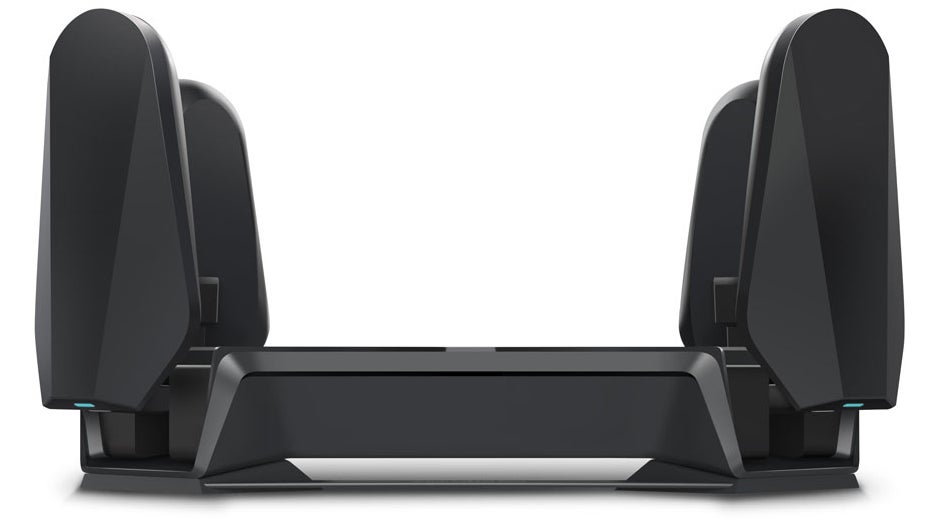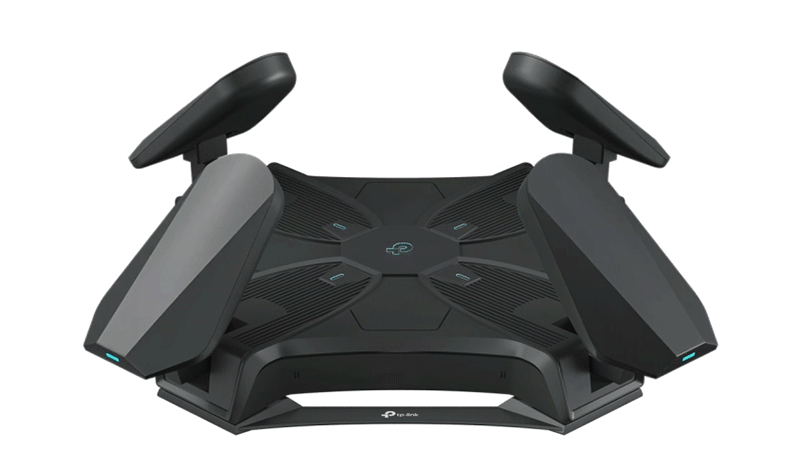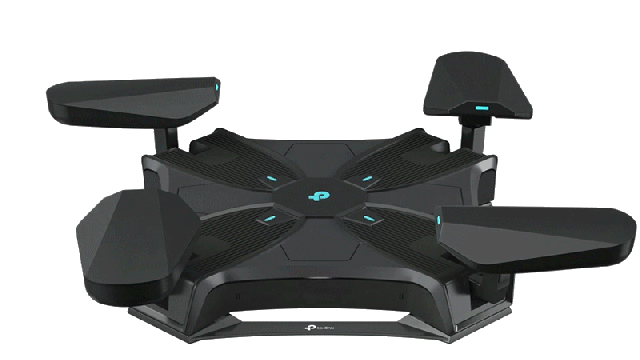There are countless factors that can affect the performance of a home’s wifi network, from building materials to running appliances to the location of the devices trying to connect to it. TP-Link’s solution to that last problem is a new Wi-Fi 6E router with four motorised antennas that independently move and rotate to automatically provide the strongest signal possible to devices as they move around your home.
These days the easiest way to ensure that access to your home’s wireless network is consistently fast and reliable in every room and on every floor is through a mesh network where multiple nodes spaced around a large house work together to expand the reach of the wireless signals. Multiple nodes mean multiple pieces of hardware, however, and that can get expensive, especially if you’re looking to upgrade to the latest wifi standard, Wi-Fi 6E. A three-node mesh wifi 6E system from Linksys will set you back $US1,200 ($1,670), for example. Ouch.

A more affordable solution to an inconsistent wireless network is to opt for a single wireless router that features large external antennas. These can be strategically positioned and angled to direct wireless signals to specific areas of your home, but most consumers don’t realise how these antennas actually work, nor do they know the best way to take advantage of being able to adjust them, so TP-Link is letting its new Archer AXE200 Omni make those adjustments all on its own.

The tri-band router works on the new 6 GHz band as well as the older 5 GHz and 2.4 GHz bands, so it will still be compatible with older wifi devices. Only devices that support Wi-Fi 6E can tap into the new band. Wi-Fi 6E promises to reach the theoretical top speed of Wi-Fi 6 with more consistency and reliability through the use of 59 non-overlapping channels that simultaneously provide multiple devices their own private high-speed lane on the information superhighway.

Powered by a 2.0 GHz quad core processor, the Archer AXE200 Omni also includes both a 10G and 2.5G ethernet port for tethering gaming PCs and video game consoles to the internet, but the biggest innovation is the four external antennas that mechanically rotate and independently adjust their angles to ensure that signals are being sent to where they’re most needed in a home. If most devices accessing the internet are located upstairs as people are streaming TV or browsing social media in bed at the end of the day, the router will target that area of the house.
It’s a clever idea, but it remains to be seen what these upgrades will add to the cost of the Archer AXE200 Omni — pricing hasn’t been revealed yet. Standalone Wi-Fi 6E routers will still set you back around $US500 ($696), and if the Archer AXE200 Omni ends up being steeper than that, it may be worth switching to a mesh solution instead.
